
Page 3


The search for the Holy Royal Relics began in 1103AD.
![]() The Knights Templar find The Copper Scroll
The Knights Templar find The Copper Scroll
The first major find was a scroll which they had to take to France to be interpreted. One scroll was copied by Lamhert of St Omer and the copy is now in the library of Ghent University. The scroll has a diagram containing two main pillars; both of which are identified with Jacob or James, who became the kingly and priestly pillars combined after Jesus' death. The scroll is intitled 'The Heavenly Jerusalem circa 1200AD'
A copy of the Copper Scroll was discovered in Cave 3 ( Dead Sea ) in March 1955 and was a genuine autograph text rather than a copy of an original. Another copy of this scroll was also under the Temple in Jerusalem.
The Copper Scroll lists huge amounts of gold, silver precious objects and at least twenty-four scrolls within the Temple. Directions are given to sixty-one different caches; the following are typica1 of listings: - Christopher Knight & Robert Lomas, The Hiram Key: Pharaohs, Freemasons and the Discovery of the Secret Scrolls of Jesus
Examples of the caches include: "In the cistern which is nineteen cubits in front of the eastern gateway, in it are vessels, and in the hollow that is in it: ten talents.
"In the Court of [?] ..., nine cubits under the southern corner: gold and silver vessels for tithe, sprinkling basins, cups, sacrificial bowls, libation vessels, in all six hundred and nine."
"In the inner chamber of the twin pillars supporting the arch of the double gate, facing east, in the entrance, buried at three cubits, hidden there is a pitcher, in it, one scroll, under it forty-two talents. - Copper Scroll 3Q15 2.7-9, 3.1-3, 6.1-4
Thus the Copper Scroll appears to be an official Temple document and gives 64 different locations for treasures from the Temple in Jerusalem. If the Copper Scroll with its Greek loan words, is of 1st century origin, it may be the actual inventory of treasures which were hidden before the destruction of the Temple in 70 C.E. and lost ever since.
"John Allegro's interpretation of the 'Copper Scroll' indicated that there was at least one other copy, deposited in the Temple itself: - Christopher Knight & Robert Lomas, The Hiram Key: Pharaohs, Freemasons and the Discovery of the Secret Scrolls of Jesus
"In the Pit (Shith) adjoining on the north, in a hole opening northwards, and buried at its mouth; a copy of this document, with an explanation and their measurements, and an inventory of each thing and other things. - Copper Scroll 3Q15 11.10-13
"..... In at least eight passages, writings are mentioned as being buried adjacent to the treasures.
"One of the most notable such passages is the statement (first seven lines in column 7) that one is to dig at the northern opening of the 'Cave of the Pillar', three cubits downward, where an amphora containing a scroll ( Hebrew, safer ) is to be found, and, underneath it, forty-two silver talents. Strikingly, this passage follows another to the effect that thirty-two talents have been hidden in a tomb located at the 'Brook of the Dome'...as (one) comes from Jericho ( seven miles from Qumran ) to Sekhakha'".
"Yet more notable is the statement at the beginning of column 8 that scrolls (sefarin, plural), have been hidden along with ritual vessels at an aqueduct, also apparently located near Jericho. Other 'writings'( Hebrew, ketch, plural, ketahin ) are mentioned as havng placed near hidden treasures in at least five other passages of the scroll. These may have been documentary records specifying the various treasures placed near them, just as the Copper Scroll itself is designated as a 'ketch' - not a sefer - at the end of the final column".
"These facts are... readily explainable on the basis of movements af the hides from the capital eastward to several areas of the Judean Wilderness: first, to locations near Jericho; then, as the Roman buildup there proceeded in the months prior to the onset of the siege on the capital, to caves south of the Wadi Mukallik (Caves 3, 11, 1, and 2); and eventually, those near Wadi Qumran, lying yet farther to the south, i.e., Caves 4 though 10. - Norman Golb, 'Who Wrote the Dead Sea Scrolls?', (1995) p p. 126, 127 "The amount of the described treasures is colossal: 26 tons of gold, 65 tons of silver, precious vases, instruments for worshipping, sacerdotal clothing... However, the excavations that have been carried out at that epoch in accordance with the instructions of the Scroll, never unearthed anything. - "Secrets of the Dead Sea Scrolls - Netmagazine ( I would venture to say The Knights got it first and got it all. It is possible they actually found and removed The Lost Ark of The Covenant ? The earliest written copies of Masonic ritual state unequivocally that the ancient masons found the Ark of the Covenant hidden in a cave under the site of King Solomon's temple.
![]() "In pursuance of your orders, we repaired to the
secret vault, and let down one of the companions as before.
The sun at this time was at its meridian height,
the rays of which enabled him to discover
a small box, or chest, standing on a pedestal,
curiously wrought, and overlaid with gold:
he gave the signal of ascending,
and was immediately drawn out. We have brought the ark up,
for the examination of the grand council."
"In pursuance of your orders, we repaired to the
secret vault, and let down one of the companions as before.
The sun at this time was at its meridian height,
the rays of which enabled him to discover
a small box, or chest, standing on a pedestal,
curiously wrought, and overlaid with gold:
he gave the signal of ascending,
and was immediately drawn out. We have brought the ark up,
for the examination of the grand council."
According to 4QFlorilegium [associated with the
War Scroll], the enemies of Israel "are no longer identified with
foreign nations such as the Philistines, the Babylonians,
or the Romans. The author describes them as
agents of Belial who try to seduce the true people of God and to
let them stumble in order to deliver their souls to Belial
(lines 7-9). In the present, Belial is ruling in the world
([Community Rule] 1QS 1.18). He has taken captive
the priests of Jerusalem with three nets ([Damascus Document]
CD 4.12-18); that is why the Temple service can no
longer atone for the land."
- Otto Betz, "Jesus and the Temple Scroll" in Jesus
and the Dead Sea Scrolls (James H. Charlesworth, Ed. - 1992), p. 96
The war Scroll
![]()
The Catholic version of the story..Their story is told in full in the article TEMPLARS; hence, to avoid repetition, it will suffice to mention here the principal facts. In the first year of the pontificate of Clement V the French king began to demand from the pope the suppression of this ecclesiastical order and to set afoot a campaign of violence and calumny such as had so far succeeded in the case of Boniface VIII. If the pope, as was naturally to be feared, refused finally to yield in the matter of the process against his predecessor's memory, he would surely be glad to buy relief with the sacrifice of the Templars.
Owing to the weakness and irresolution of Pope Clement, the royal plan succeeded. After an unsuccessful attempt of the pope (in August, 1307) to unite the Templars and the Hospitallers, he yielded to the demands of King Philip and ordered an investigation of the order, against which the king brought charges of heresy (renunciation of Christ, immorality, idolatry, contempt of the Mass, denial of the sacraments, etc.). Philip, however, did not wait for the ordinary operation of the Inquisition, but, with the aid of his confessor, Guillaume de Paris (the inquisitor of France), and his clever, unscrupulous jurists (Nogaret, de Plaisians, Enguerrand de Marigny) struck suddenly at the whole order, 12 October, 1307, by the arrest at Paris of Jacques de Molay, the Grand Commander, and one hundred and forty knights, followed by the inquisitor's mandate to arrest all other members throughout France, and by royal sequestration of the property of the order.
Public opinion was cunningly and successfully forestalled by the aforesaid jurists. It was also falsely made to appear that the pope approved, or was consentingly aware, of the royal action, while the co-operation of French inquisitors and bishops put the seal of ecclesiastical approval on an act that was certainly so far one of gross injustice.
While Philip invited the other princes of Europe to follow his example, Clement V protested (27 October) against the royal usurpation of the papal authority, demanded the transfer to his own custody of the prisoners and their property, and suspended the inquisitional authority of the king's ecclesiastic and the French bishops. Philip made an apparent submission, but in the meantime Clement had issued another Bull (22 November) commanding an investigation of the anti-Templar charges in all European countries. (It may be said at once that the results were generally favourable to the order; nowhere, given the lack of torture, were confessions obtrained like those secured in France.)
The feeble efforts of Clement to obtain for the order strict canonical justice (he was himself an excellent canonist) were counteracted by the new Bull that dignified and seemed to confirm the charges of the French king, neither then nor later supported by any material evidence or documents outside of his own suborned witnesses and the confessions of the prisoners, obtained by torture or by other dubious methods of their jailers, none of whom dared resist the well-known will of Philip. The alleged secret Rule of the Templars, authorizing the aforesaid charges, was never produced. In the meantime William Nogaret had been busy defaming Pope Clement, threatening him with charges not unlike those pending against Boniface VIII, and working up successfully an anti- Templar public opinion against the next meeting (May, 1308) of the States-General.
In July of that year it was agreed between the pope and the king that the guilt or innocence of the order itself should be separated from that of its individual (French) members. The former was reserved to a general council, soon to be convoked at Vienne in Southern France, and to prepare evidence for which, apart from the examinations now going on through Europe, and a hearing before the pope of seventy-two members of the order brought from the prisons of Philip (all of whom confessed themselves guilty of heresy and prayed for absolution), there were appointed various special commissions, the most important of which began its sessions at Paris in August, 1309.
Its members, acting in the name and with the authority of the
pope, were opposed to the use of torture, hence before them
hundreds of knights maintained freely the innocence of the order,
while many of those who had formerly yielded to the diocesan
inquisitors now retracted their avowals as contrary to truth.
When Nogaret and de Plaisians saw the probable outcome of the
hearings before the papal commissions, they precipitated matters,
caused the Archbishop of Sens (brother of Enguerrand de Marigny)
to call a provincial council (Sens was then metropolitan of
Paris and seat of the local inquisition tribunal), at which were
condemned, as relapsed heretics, fifty-four knights who had
recently withdrawn before the papal commissioners their former
confessions on the plea that they had been given under torture
and were quite false. That same day (12 May, 1310), all these
knights were publicly burned at Paris outside the Porte St.Antoine.
To the end all protested their innocence.
from..CLEMENT V AND THE TEMPLARS
The Vatican still has Knights under it's control. The categories
may be considered to embrace all the legitimate Roman Catholic
Orders of Knighthood. see..
Those Orders awarded directly by the Supreme Pontiff
The countries finding the Templars innocent were, Spain, Portugal, Germany, England and the island of Cypress, which was the Templars base. The Templar preceptor, Hugo of Gumbach proclaimed that it was Clement who was totally evil and was illegally elected to the throne of Peter, from which Hugo declared him deposed.
The renegade templars were more than welcomed in Spain, where they were absorbed into the orders of Calatrava, Montesa, and Santiago. In Germany Templars joined the ranks of the Order of St. Mary or the Teutonic Knights. In Portugal they became Knights of Christ of which Christopher Columbus may have been a member, hence the Templar crosses on his sailing ships. In Scotland the Templars were welcomed by Robert the Bruce, who himself may have been a Templar.
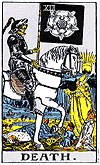 Pope Clement under the control of Philip, suppressed the
Knights Templar by papal bull at the Council of Vienne on
November 22nd, 1312. Secrets the Templers were able to pass amoung
themselves were sent in the form of Tarot Cards. The Church
had these outlawed too. This card appears to be a story of the
murdered Jaques de Molay... click on the card to see a
larger picture. There are two children in the card which represent
De Molay's innocence and the murdered Jacques de Molay is on
the ground. The pope stands over him in triumph. The secret messages
incoded in the cards..
The Templars and the Tarot
Pope Clement under the control of Philip, suppressed the
Knights Templar by papal bull at the Council of Vienne on
November 22nd, 1312. Secrets the Templers were able to pass amoung
themselves were sent in the form of Tarot Cards. The Church
had these outlawed too. This card appears to be a story of the
murdered Jaques de Molay... click on the card to see a
larger picture. There are two children in the card which represent
De Molay's innocence and the murdered Jacques de Molay is on
the ground. The pope stands over him in triumph. The secret messages
incoded in the cards..
The Templars and the Tarot
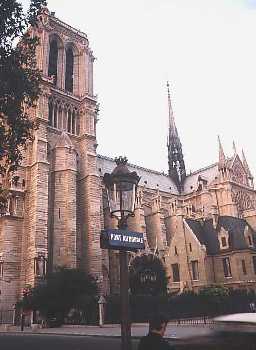 This all took place when Grand Master Jacques de Molay was nearly seventy
years old and could not handle the riggers of torture. He confessed
to several things , but refused to confess to
homosexual practices. Then, two years later it was decided
that a public confession was necessary and they paraded Jacques and other
leaders before the nobility and influential commoners on a
high platform at the cathedral of Notre Dame.
This all took place when Grand Master Jacques de Molay was nearly seventy
years old and could not handle the riggers of torture. He confessed
to several things , but refused to confess to
homosexual practices. Then, two years later it was decided
that a public confession was necessary and they paraded Jacques and other
leaders before the nobility and influential commoners on a
high platform at the cathedral of Notre Dame.
![]() On March 14, 1314,
De Molay chose martyrdom rather than stand on his forced confession.
The rest of the order retracted their forced confessions and
declared their innocence and the innocence of the order, Philip had them burned
at the stake in Paris on March 18, 1314.
On March 14, 1314,
De Molay chose martyrdom rather than stand on his forced confession.
The rest of the order retracted their forced confessions and
declared their innocence and the innocence of the order, Philip had them burned
at the stake in Paris on March 18, 1314.
Some of the Templars' holdings were dispersed, some going to the Knights Hospitalers and some to secular rulers, although Philip received nothing. Clement had secretly arranged to have the Hospitalers and the Knights combined, so that Philip could not have a family member in charge of the holdings. After Clement ordered a merger of the Knights and the Hospitallers, very few knights who were released joined that group and they converted the remaining members to a new order called the Knights of Christ. Some of the Knights did escape, as did eighteen fully loaded ships from the French harbor of La Rochelle, and the Sinclair Clan ( St. Clair ).
After the arrest of the French 'brothers' on Oct 13th, 1307, they went 'underground'. Alot of valuables, papers, and money suddenly just disappeared from France, but none of it went to Philip.
Portugal: The Knights of Christ
"In Portugal, the Templars were cleared by an inquiry and
simply modified their name, becoming the Knights of Christ. They
survived under this title well into the sixteenth century, their
maritime explorations leaving an indelible mark on history. (Vasco
da Gama was a Knight of Christ; Prince Henry the Navigator was a grand
Master of the Order. Ships of the Knights of Christ sailed
under the Templars' familiar red patte cross. And it was under the
same cross that Columbus's three caravels crossed the Atlantic to
the New World. Columbus himself was married to the
daughter of a former Grand Master of the Order, and had access
to his father-in-law's charts and diaries.)
- Baigent & Leigh, The Temple and the Lodge
"After Napoleon conquered Rome in 1809, some files were brought back to
Paris from the secret archives of the Vatican. Among these were a few
documents relating to the Templar trials. In one of these records was the
statement of Jean de Chalons, a member of the Order from Nemours in the diocese of Troyes."
- Johannes and Peter Fiebag, The Discovery of the Grail,
translated from the German by George Sassoon This is what
it said;
"On the evening before the raid, Thursday October 12th 1307, I myself saw three carts loaded with straw, which left the Paris Temple shortly before nightfall, also Gèrard de Villiers and Hugo de Chalons, at the head of 50 horse[men]. There were chests hidden on the carts, which contained the entire treasure of the Visitator Hugo de Pairaud. They took the road for the coast, where they were to be taken abroad in eighteen of the Order's ships." - Jean de Chalons
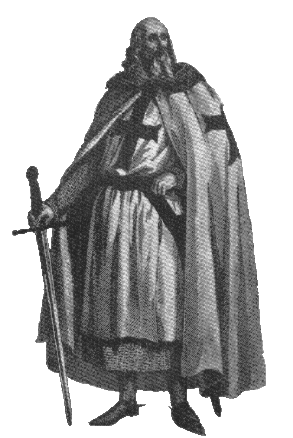 Most modern scholars know that the charges against them
were completely fabricated.
Most modern scholars know that the charges against them
were completely fabricated.
The Church had holdings in England which amounted to one third of all the land. The Knights had property there also, which had been given to the Hospitallers.
After this many Templars seem to have taken refuge in Scotland, whose king, Robert the Bruce, was at that time under excommunication by Rome and was also fighting to keep his country free from English rule. The Scottish cause was not faring well; the English had set up strongholds throughout much of Scotland, and it seemed only a matter of time before the nation fell under England's sway.
The absolute secrecy that shrouded the first
three centuries of Freemasonry makes it difficult to
assess the full spectrum of esoteric influences that
formed the order, The knights were
the prime movers behind the transformation of the
guilds of operative masons into the speculative and
fraternal society of Freemasonry. It developed along
lines in each country where it took root; in Scotland it was
particularly democratic and continued to admit ordinary working
people into the ranks in large numbers.
There the tradition of preserving secret and sacred knowledge
through teaching rituals leading up to the higher
degrees was preserved almost intact, and developed
a high degree of sophistication and complexity. This led to the
development of Scottish Rite Freemasonry and the Royal Arch degrees.
Scottish Rite Freemasonry was founded on the principals
enunciated in 1320, in the Declaration of Arbroath, which was
the written constitution of Scotland established at the time
of King Robert the Bruce.
from.. Rex Deus
Robert was excommunicated but reinstated. When this happened the Templars and the order went underground again, some believing this is when they became known as the 'Priory of Sion' group. As we discussed on Knights Templar, page 1, The Prieure de Sion is a modern association, having been formed in France in 1956. However the Royal lineage goes much farther back and can be traced to a possible descendent of Jesus.
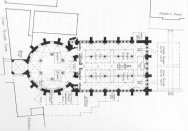 The TEMPLE CHURCH
Registers from 1628 held by the Master, Temple, London
The TEMPLE CHURCH
Registers from 1628 held by the Master, Temple, London
 More Cathedrals
Masonic Builders
More Cathedrals
Masonic Builders
But in 1381 the tide turned decisively. Rebels lead by Wat Tyler stormed the castle of Cressing in Canterbury England and retook the property taken from the Knights in 1314. They killed many Hospitallers and then marched 100,000 men towards London and arrived there after traveling 75 miles in two days. They marched across London bridge burning every house they could identify as a Hospitallers. They cleaned out the Church, of Westminster, which they formally owned by taking records into the street and burning them not harming the church. 'The Temple' Church as it still stands today.
At the celebrated Battle of Bannockburn, Robert the Bruce routed English forces two and a half times the size of his own, guaranteeing Scotland's independence for the next 300 years. Oddly enough, even here the battle seemed to be going against the Scots when at the last moment a mysterious force came to their aid. Accounts of this event are garbled; the best-known version says the camp followers of the Scottish army entered the fray, blowing horns and waving home made flags. Mistaking them for real reinforcements, the English panicked and fled.
Robert the Bruce had adopted Celtic practices which were aligned with Druidic and Enochian traditions of the Celts. Robert I was a Rex Deus family member from the Norman line of de Bruce. When King Robert did not produce a male heir, his daughter's son ended up founding the line of the Stewarts, who named no less than eight of their kings James after the brother of Jesus and in honor of the Jacobite church. It was no accident that James Bruce had successfully recovered the secret books of Enoch that had been lost to the world for 1500 years.
From the 11th century, the Rex Deus family of St. Clair had
been building their power base until they became the most
powerful family in Scotland. They owned more of Scotland than
the de Bruce line of the kings of Scotland.
The St Clairs posed a threat to the Royal Stewart line of Kings
and some of their lands were broken up to stop this threat in
1460 ,by King James III.
It was feared that the St Clairs were going to challenge the
Stewarts right to rule.
The St Clair line however retained the loyality of the order
of Freemasonry that they had created, and the lodges of
Scotland came to the defence of the St Clairs who remained
Grand Master Masons until 1736 when William resigned his office
to allow a democratically elected leader to take over.
But when William St Clair died on july 3rd, 1480, the rest of
his holdings were forcibly broken up between his 16 children
by order of King James III.
The St Clairs had already given up Orkney in 1471 and large
parts of Dublin.
In England the Hanoverian control still remains, dening any Jacobite connections to be brought out. They dissociate themselves from their Scottish roots and reworked their own rituals in order to supress the 'illogical' Enochian elements and replaced them with 'Pauline' Christian ideas. This is due largely to church control of the Royals, just as it was in the 11th century.
There is some evidence for Templar survivals in the British Isles after their suppression as mentioned above. Amateur historian John J. Robinson, Born in Blood, argues that the Peasants' Revolt in England in 1381 was not a spontaneous uprising but an event carefully orchestrated by heirs to the Templar lineage. He notes, for example, that the rioting mobs often went far out of their way to sack properties belonging to the Knights Hospitallers, who had taken over the Templar holdings in England.
Wat Tyler -- every good Mason knows that the "Tyler" is a lodge function: he is the one who stands guard outside the meeting. Stephen DaFoe's Knight History
In 1771, The Freemasons and the Knights Templar of England 'came out' revealing the order to the world by Forming the First Grand Lodge in Westminster England. On June 24th, ( St. John the Baptist's day ) the Grand Lodge was instituted and elected it's first Grand Officers. There were only four lodges that initially joined while others became outraged that the 'brothers' had broken the 'oath' of secrecy and would have nothing to do with them.
In 1718 The Grand Lodge asked for any records or documents related to the history of the order. Many lodges burned their records preventing todays historians from doing much research, which may explain why the Egyptian background and old secret rituals are lost forever. From this, many feel the Order did not have a background beyond the Knights of 1100AD. Some even say there was NO workman's or 'builders' guild that came from the time of Solomon, because no records can be found in England or France to support this. With this excuse they say the drama of Hiram Abiff only relates to the knights being tortured and killed and not anything having to do with the Biblical Hiram of Tyre or the Son of the Widow in the Bible. He even states, the so-called bloody oaths ( in the First - third degree ) are the result of the torture of the Knights.John J. Robinson, Born in Blood - 1989 .
Mr Robinson was not a Mason at the time, but apparently did consult a mason for this history, however this sect which does not use the word 'Ancient' or 'Scottish' in its title, is not willing to except an older origin, therefore he did not know where to look, or was convinced not to. Mr. Robinson eventually did join the order, but unfortunately, died soon after. The written legacy that he left us is thought provoking and worthy of our attention. After publishing this book Mr. Robinson found himself in great demand as a lecturer on Freemasonry and often found himself defending the order from attacks by its enemies, which include the ultra-fundamentalist Southern Baptists in the US. He details these attacks and his defense in another book titled "A Pilgrim's Path". excerpts from "A Pilgrim's Path - Freemasonry and the Religious Right"
The Masonic Information Center is a division of The Masonic Service Association. The Center was founded in 1993 by a grant from John J. Robinson, well-known author, speaker, and Mason. Its purpose is to provide information on Freemasonry to Masons and non-Masons alike and to respond to critics of Freemasonry. The Center is directed by a Steering Committee of distinguished Masons geographically representative of the Craft throughout the United States and Canada.
Even the Egyptian Book of the Dead has the word "Mason", in the paragraph called, APPENDIX (From the Papyrus of Nu and the Papyrus of )Nebseni..automatic scroll down This and other proof that freemasonry is much older than the Templers history of the Grand Lodge of England, has been revealed through out these pages. Consult the Builders page, the Jesus pages, Hiram the Legend page, and refer to the paragraphs about the Essenes and the royal bloodlines above. The Lecture of 1857,( Scottish ) and the Regius Manuscript are very important proof documents. The English hatred of the Scots has caused a 'royal rift' that destroys any effort to discover real Templar origins and have them documented. It also sounds like another 'rift' between Catholics and Protestants.
Moses was an ancient mason, a free man. Abraham was a
mason. Seqenenre Tao II, Enoch,( who built the Great Pyramid of
Gaza ) Noah,( who built the Ark ) Adam, ( whose decendents
built the Tower of Babel )ect., ect., ect. Why must the title of
Mason be confined to a more recent group in England who base
the origin soley on the Knights? The words 'Brotherhood' and
'Sons of Light' in all the ancient writings, including scripture,
is the proof.This description of the
righteous as "sons of light" is echoed in the Gospel of John:
"While ye have light, believe in the light, that ye may be the
children of light. These things spake Jesus..."
- John 12:36a
"Light is shed upon the righteous and joy on the upright
in heart."
- Psalm 97:11
"According to a famous rabbinic concept, God concealed the light
which he created on the first day from the present world,
'but in the world to come it will appear to the pious in all its
pristine glory.' This explanation of the 'sons of light' is
present in the Dead Sea Scrolls, where it is said only that 'in
the 'spring of light' are the generations of truth and from
the well of darkness come the generation of perversity'
([Community Rule] 1QS 3.19)."
- David Flusser, "The Parable of the Unjust
Steward: Jesus' Criticism of the Essenes" in Jesus and the
Dead Sea Scrolls (James H. Charlesworth, Ed. - 1992), p. 181
"We are introduced...(column 3, line 13) to the figure of
an 'instructor' (Hebrew maskil) whose task is to teach all 'sons
of light' about the true natures of men. The 'all-knowing Lord',
we learn, is responsible for everything that is and was: He has
preordained the destinies of all living creatures, and their
ultimate actions and fate cannot be changed.-"Any fault or sin
committed by sons of righteousness, the author explains,
is attributable to the angel of darkness, for reasons
that are secret except to the Lord until the age of His own
complete dominion dawns. If in the author's own time the
righteous suffer, it is due to this same influence of the angel
of darkness. Nonetheless, although having Himself created these
two opposing angelic spirits,'the Lord of Israel and the angel
of His truth aid all sons of light' - the Lord loving the one
spirit and hating the other.
Those of humble men, we are told, thereby possess all
desirable moral and spiritual virtues - slowness to anger,
mercifulness, understanding, supportive belief in the Lord's
deeds and His benevolence, zeal for righteous
laws, acts of loving kindness toward all the 'sons of truth',
and revulsion at all ritual impurity."
Norman Golb, Who Wrote the Dead Sea Scrolls?,
(1995) pp. 68-69
Believers are presently living in an era when Satan (here called Belial) rules the world. The New Testament terms Satan ' the Prince of this world.' Ultimately, that fact explains why believers, who know and live by the truth, have such difficulties in this world. Believers are 'Children of Light', nonbelievers are Children of Darkness - terminology also used in the New Testament. Among other names, the association calls itself 'The Way' (i.e., 9:18), a self-designation that some of the first Christians also used (Acts 9:2)." Michael Wise, Martin Abegg, Jr., and Edward Cook, The Dead Sea Scrolls: A New Translation (1996) p. 125
The community is to assemble - including women and children - to hear the covenant and its exposition, which are binding on everyone born in Israel ([Rule of the Congregation] lQSa 1)." - Howard C. Kee, "Membership in the Covenant People at Qumran and in the Teaching of Jesus" in Jesus and the Dead Sea Scrolls (James H. Charlesworth, Ed. - 1992), p. 116
"So shall all together
comprise a Yahad whose essence is truth, genuine humility, love
of charity, and righteous intent, caring for one another after
this fashion within the holy society, comrades in an eternal
fellowship."
- Community Rule 1QS 2.24
Durning the Crusades, a small order of Syraic Christians, who claimed to be decendents of the Essenes, were rescued from Moslem attack by the Knights Templar. Legend claims the Syraic Christians later left the Holy Land and settled in Scotland, where they founded a chapter of the Templar order. A myth evolved claiming the Templars were initiated into the gnostic teachings handed down by the Essenes, who initiated Jesus into the mysteries. Agustus Stark claims the Templars received their esoteric knowledge from the Persians, Syrians, and Egyptians, which was passed on to them by an Essenic secret society existing in the Middle East.
The following was sent via E-Mail to us on February 17, 2002 by Chris Bennett, with his permission to use it here.
Chris's comment: "the rest of this series on alchemy is in attachments..... An online Alchemy Journal has the whole series posted, but feel free to post it yourself.
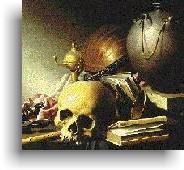 Further study on Alchemy and ancient
scientific practices ..AlChemy
Alchemy had its basis in the skills of Egyptian artisans, Eastern mysticism, and
Aristotelian theory of composition of matter. Aristotle taught that all matter
was composed of four elements: water, earth, fire, and air.
According to his theory, different materials found in nature had different
ratios of these four elements. Therefore, by proper treatment
a base metal could be changed into gold.
Further study on Alchemy and ancient
scientific practices ..AlChemy
Alchemy had its basis in the skills of Egyptian artisans, Eastern mysticism, and
Aristotelian theory of composition of matter. Aristotle taught that all matter
was composed of four elements: water, earth, fire, and air.
According to his theory, different materials found in nature had different
ratios of these four elements. Therefore, by proper treatment
a base metal could be changed into gold.
One alchemical symbol that is widely acknowledged by
modern scholars is that of an old bearded man, the back of whose
head shows a young woman looking into a mirror. A statue with
this image graces the exterior of Nantes cathedral, as does a
bearded king with the body of a woman, in the porch at
Chartres that depicts the Queen of Sheba.
The hermaphrodite is a pure alchemical symbol, representing the
perfect balance achieved in the Great Work, and the perfect
being, in which the alchemist himself is transformed and
transmuted spiritually - and, as many believe, physically as
well. It was a 'consummation devoutly to be wished' and
had little, if anything, to do with sexuality as we understand
it today.
The Great Work was an explosion of the potential into the actual,
where they mystical quest takes on concrete form. As the
alchemists said, 'as above, so below' - this process was
believed to make spirit into matter and transmute one
sort of matter into another. It made a man into a god.
Lynn Picknett & Clive Prince, Turin
Shroud - In Whose Image? The Shocking Truth Unveiled
Cannabis: The Philosopher’s Stone, by Chris Bennent
Part 1: The Knights Templar and Cannabis from Green Gold: the Tree
of Life, Marijuana in Magic and Religion
by Chris Bennett, Lynn Osburn, and Judy Osburn,(published
by Access Unlimited, 1995 )
Contents;
1. The Knights Templar and Cannabis
2. Sufi Alchemists and the Grail Myth
3. The Alchemist Monk Francois Rabalais
4. Medieval Alchemists and Cannabis
5. The Hashish Club
The Knights Templar and Cannabis
The alchemical information about cannabis use was reintroduced into Europe after the Dark Ages, when the Knights Templar, founded by Hugh de Payns (“of the Pagans”) around the beginning of the twelfth century, became involved in a trade of goods and knowledge with the hashish ingesting Isma’ilis. This knowledge was passed on from Eastern adepts and handed down esoterically through the medieval alchemists, Rosicrucians[1] and later on to the most influential occultists of the late nineteenth and early twentieth century.Modern Freemasonry is also said to have been derived from ancient Templar knowledge, which in turn came from earlier Arabic sources.
“Sufi ism,” said Sir Richard Burton, was “the Eastern parent of Freemasonry.” However, the modern day Freemasons, the religion of the Businessman and Banker,[2] for the most part are practicing empty rituals the meaning of which has been long forgotten. But some mystic Masons like Gerard de Nerval, one of the members of the famous Le Club Des Haschischins, were well aware of this Arabic origin for modern Freemasonry. Nerval commented on it in one of his books, much to the horror of many Masons of the time. Nerval published a 700 page memoir, Voyage en Orient, and released information considered sacred by Masons concerning the Master Builder Hiram, which is a pivotal part of their secret rituals.
As the authors of The Temple and the Lodge commented:
Nerval not only recited the basic narrative. He also divulged -
for the first time, to our knowledge - a skein of eerie
mystical traditions associated in Freemasonry with Hiram’s
background and pedigree. What is particularly curious is that
Nerval makes no mention of Freemasonry whatsoever. Pretending
that his narrative is a species of regional folk-tale, never
known in the West before, he claims to have heard it
orally recited by a Persian raconteur, in a Constantinople
coffee-house.
Idries Shaw, the Grand Sheik of the Sufis and historian of their faith, commented on the connection between the Templars and the Sufis: That the Templars were thinking in terms of the Sufi , and not the Solomonic, Temple in Jerusalem, and its building, is strongly suggested by one important fact. “Temple” churches which they erected, such as one in London, were modeled upon the Temple as found by the Crusaders, not upon any earlier building. This Temple was none other than the octagonal Dome of the Rock, built in the seventh century on a Sufi mathematical design, and restored in 913.
The Sufi legend of the building of the Temple accords with the alleged Masonic version. As an example we may note that the “Solomon” of the Sufi Builders is not King Solomon but the Sufi “King” Maaruf Karkhi (died 815), disciple of David (Daud of Tai, died 781) and hence by extension considered the son of David, and referenced cryptically as Solomon - who was the son of David. The Great murder commemorated by the Sufi Builders is not that of the person (Hiram) supposed by the Masonic tradition to have been killed. The martyr of the Sufi Builders is Mansur el-Hallaj (858-922), juridically murdered because of the Sufi secret, which he spoke in a manner which could not be understood, and thus was dismembered as a heretic.’
Idries Shaw, The Sufis Mansur el Hallaj, an outspoken advocate of intoxication as means to spiritual ecstasy, is stated to have been the founder of the still existing Order Templar Orientis in their official documentation, either written by, or under the supervision of the great hashish initiate Aleister Crowley, who at one time was a grand master of the Order. Interestingly el-Hallaj is also connected with the pre-European history of alchemy . Not surprisingly many have credited the Templars with being a vital link in this chain of transmission. The Order of Knights of the Temple was founded in the Holy Land in 1118 A.D. Its organization was based on that of the Saracean fraternity of “Hashish im,” “hashish-takers,” whom Christians called Assassins.
The Templars first headquarters was a wing of the royal
palace of Jerusalem next to the al-Aqsa mosque, revered by the
Shi’ites as the central shrine of the Goddess Fatima.
Western Romances, inspired by Moorish Shi’ite poets, transformed
this Mother-Shrine into the Temple of the Holy Grail , where
certain legendary knights called Templars gathered to offer
their service to the Goddess, to uphold the female principles
of divinity and to defend women. These knights became more
widely known as Galahad, Perceval, Lohengrin, etc.
-Barbara Walker, The Woman’s Encyclopedia of Myths and
Secrets.
The authors of The Holy Blood and the Holy Grail also
comment on the liaison between the Templars and Isma’ili’s:
“Secret connections were also maintained with the Hashishim or
Assassins, the famous sect of militant and often fanatical
adepts who were Islam’s equivalent of the Templars .”
The authors also comment that “the Templars ’ need to treat
wounds and illness made them adepts in the use of drugs.”
And the Order; “in advance of their time regarded epilepsy not
as demonic possession but as a controllable disease.”
Interestingly cannabis is the safest natural or synthetic
medication proven successful in the treatment of some forms of
epilepsy.[3] Most (scholars) agree that the Templars
“had adopted some of the mysterious tenets of the Eastern
Gnostics.” -
Walker, quoting, R.P. Knight, The Symbolic Language
of Ancient Art and Mythology
The famed New Age author, and modern day “stoned philosopher” Robert Anton Wilson, wrote a whole book on the Templars, putting forth a theory that they were practicing a form of Arabic Tantrism, and ingesting hashish , a technique they had picked up from their contact with the Assassins. Unfortunately Wilson offers no documentation, but does comment that; "ambiguous references to a sacred plant or herb appear in their [the Templars ] surviving manuscripts.”
[4]The Templars had acquired a great deal of wealth, a fleet of ships and a strong army of warriors who fought by a creed of never retreating unless the odds were more than three to one. Some began to feel threatened by the wealth and power the Order had attained. In a joint effort orchestrated by King Philip (who had been rejected membership into the sect) and Pope Clement V, the Templars were accused of heresy. Among the many criminal accusations against the Templars were mocking the cross, sodomy [5] and worshipping a mysterious idol in the form of a head. The Templars were also accused of tying a sacred cord around their waist, which was said to have been consecrated by pressing it against the mysterious head. The spiritual descendants of Zoroastrianism, the modern Parsi, each day tie a sacred cord around their waist as part of the ancient Kusti ritual. The Templar practice of the Zoroastrian Kusti ritual indicates a tradition of knowledge going back through the Isma’ilis (witness the similarities between their seven grade initiations, with those of the cult of Mithras) to earlier Gnostic and Zoroastrian influences.
If the Templars trampled the crucifix, they may have
copied the example of Arab dervishes who ceremonially rejected
the cross with the words, “You may have the Cross, but we have
the meaning of the cross.”
Idries Shaw, The Sufis.
The crucifixion is a major tenet of Roman Catholicism that has been denied by a number of groups dating back to the earliest days of Christianity. The Gnostics were killed for repudiating it. The largest massacre in Roman Catholic Church history was over this very tenet when the Albigensian Crusade took place and 30,000 soldiers were sent forth by the Papacy to slaughter 15,000 men, women and children - slaughtered not for denying Christ and his teachings, but for denying his crucifixion. (See chapters 19 and 20, Goddess and the Grail and The Resurrection.)
In The Sufis, Idries Shaw states the Templars ’ worship of a mysterious head could well be a reference to the great work of transhumanisation that takes place in the aspirant’s own head. The Golden Head (sar-i-tilai) is a Sufi phrase used to refer to a person whose inner consciousness has been “transmuted into gold” by means of Sufi study and activity, the nature of which it is not permissible to convey here. - Idries Shah, The Sufis
We propose in this study that the mysterious head
worshipped by the Templars may have actually been some sort of
a vessel or cauldron, like the head of Bran the Blessed in
Celtic mythology [6] or a later day version of the
Mahavira Vessel . In “The Mahavira Vessel and the Plant Putika,
” Stella Kramrisch describes a plant which she connects with
the mysterious soma.[7] The Mahavira Vessel, like the Templars
mysterious idol, is referred to as a head. To the
ancient worshipper the Mahavira vessel represented the
decapitated head of Makha, from whose wound flowed forth the
Elixir of Life.
The Templars were rounded up and arrested on Friday the
thirteenth (the origin of the “bad luck” associated with this
combination), October, 1307.
Although put through the extreme tortures that the
Inquisition was so famous for, the vast majority of the
Templars denied the charges. Of course the inquisitors coerce a
small number of admissions of guilt. When subjected to
excruciating pain, people will most often admit to whatever their
questioners want to hear. The court repeatedly refused to hear
depositions from no fewer than 573 witnesses. Some Templars
managed to escape, but the majority were burned at the stake.
A witness to the event stated: All of them, with no exception,
refused to admit any of their alleged crimes, and persisted in
saying they were being put to death unjustly which caused great
admiration and immense surprise.[8]
- Stephen Howarth, The Knights Templar
For this act Dante, who was inspired by Sufi authors, in his
Inferno, places both King Philip and Clement V firmly in Hell.
Baigent and Leigh speculate in The Temple and the Lodge that some of
the Templars may have escaped to Scotland. They point to medieval graves
with Templar insignias, and Templar style churches (round) as evidence.
Scotland was at war with England at the time of the Templars ’
persecution, and in the resulting chaos the Papal Bulls
dissolving the Order were never proclaimed there. Comparatively,
according to Professors Graeme Whittington and Jack Jarvis of
the University of Saint Andrews in Fife, Scotland,
hemp as grown agriculturally in tenth century Scotland. Sediment
from Kilconquhar Lock, near Fife, contained cannabis pollen .
Cannabis from around the same time has been found in East Anglia,
Wales and in Finland.
The hemp was found to have been grown in areas occupied by
religious groups of the time. Jarvis commented in an Omni
interview, “the decline of these ecclesiastical establishments
may have coincided with a decline in the growing of hemp.”
In a letter to Chris Bennett, dated November 6, 1992, Dr.
Alexander Sumach, author of Grow Yer Own Stone and A
Treasury of Hashish stated:You are on to some interesting
views. The Templars were active in only rare goods - which were
tax free. Silks, drugs, astronomical equipment.
Cannabis as a confection - not a pipe was their toy. Turkish
delight. They grew fields of hemp for canvas and rope to equip
their vast fleet that traveled far and wide. Check out the
connection between the Mic Mac Indian myth hero “Glooslap” who
may have been a Templar in Nova Scotia. He taught the
Indians to fish with nets. Cartier, centuries later saw the
natives with neat hemp clothing made from native hemp. Cartier
was from a hemp district in France, knew all about ships.
If he called it hemp....
Mircea Eliade commented on the potential connections between the Templars and the Grail Myth (also known as the Fisher King and The Perlesvaus). He stated in A History of Religious Ideas Vol. III that in a twelfth century text of the legend, the knights were members of a group referred to as Templeisen. He adds: “A Hermetic [alchemical] influence on Parzival seems plausible, for Hermetecism begins to become known in twelfth-century Europe following massive translations of Arabic works.” The scholar further comments on the secret languages, symbols and passwords that were in use in Europe at that time.
Wolfram Von Escchenbach wrote his version of the myth, Parzival, sometime between 1195 and 1220. Interestingly Wolfram is also said to have paid a “special visit to Outremer,” a Templar outpost, “to witness the Order in action.” In Wolfram’s version of the tale the Templars are the knights who guard the Grail and the Grail castle. R. Barber contends in Knight and Chivalry that Perlesvaus, written by an anonymous author, may well have been penned by a Templar.
The Templars appear in The Perlesvaus not just as military men, but also as high mystical initiates. This is indicative, for the Templars were only too eager to reinforce the popular image of themselves as magi, as wizards or sorcerers, as necromancers, as alchemist, as sages privy to lofty arcane secrets. And indeed, it was precisely this image that rebounded upon them and provided their enemies with the means of their destruction. - Baigent and Leigh, The Temple and the Lodge
FOOTNOTES:
[1] Modern Rosicrucian groups, like AMORC, have little knowledge of
cannabis use. Interestingly, the founder of the modern day branch of this
ancient order, H. Spencer Lewis, commented that when he reintroduced the Order
in the early part of this century, he altered the Rosicrucian methods more
than had ever been done before, in order to make it more acceptable to the
modern day initiate. The Encyclopedia of Religion and Ethics comments that
the Rosicrucians had been, up “until the war, very active in good works,
especially in carrying investigations into the uses of vegetable drugs
and the relief of disease by means of colored lights and hypnotic
processes.”
After studying many of the early Rosicrucian texts, I found them to be
full of vegetative symbolism and secret references to cannabis, as well as
being loaded with a lot of other valuable arcane knowledge. Perhaps this is
an area of study to be looked at in future work. - C.B.
[2] The Templars are said to have been the forerunners of the modern
Bankers, and the cheque, a Templar invention.
[3] “Marijuana...is probably the most potent anti-epileptic known to
medicine today.” (Alfred D. Berger, “Marijuana,” Medical World News,
July 16, 1971, pp. 37-43; reprinted in Marijuana Medical Papers). See also
Grinspoon’s and Bakalar’s recent publication, Marihuana, the Forbidden
Medicine for a full account of the many medical benefits of hemp.
[4]A. Wilson, Sex and Drugs.
[5] All but a few of the Templars denied these crimes, and those that
confessed did so only after a great deal of torture had coaxed them to it.
As for the charges of homosexuality and sodomy, this is not at all
surprising considering the all male atmosphere of monastic life.
Perhaps like certain orders of the Sufis, the Templars were tolerant enough of
others to permit homosexuality among those who were drawn to it, unlike
the Holy Roman Church which burned homosexuals when they were discovered.
[6] “And it is Bran’s mystical cauldron that numerous writers have
sought to identify as the pagan precursor of the "Holy Grail".
Baigent, Leigh & Lincoln, 1982.[7] See chapter 4, Persia.
[8] Historical legend has it that the defiant leader of the Templars,
Jaques De Molay, cursed both Clements and King Philip as he was burning,
telling them that they would follow him within a year. And so they did, both
dying within the year as De Molay is said to have foretold.
[9] “Recent research has shown that Sufi materials were sources of
Dante’s work. His Sufic affiliations must have been known to the alchemists of
the time.”
(Shaw, The Sufis )
Herbal Healing Chisthi, Order of Sufis


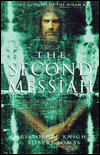


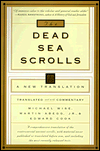
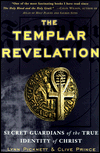
Search this site
Our search Engine does not search for the links in this site, only words in the text.
Gnosis Links
Visit 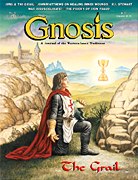
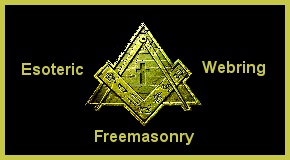
Some of the information here was taken
from a link entitled, "the Messianic Elite" by 'Fireplug'
( Richard Shand ) The information and insite he provides to the
public is priceless.
Founding of the Knights Templar
This site has a third page, which covers, Oklahoma sites including the Oklahoma Indian Degree Team, our Order of Eastern Star and other Oklahoma links. PAGE 4
Grand Priory of England and Whales
Templar Sites all over the world Information Resources on the Knights Templar

NO PART OF THIS SITE MAY BE COPIED OR REPRODUCED, IN WHOLE OR IN PART WITHOUT THE EXPRESS WRITTEN APPROVAL OF THE WEBMASTER. © COPYRIGHT 1999 - 2008 C.I.Case...ALL RIGHTS RESERVED.
If your site is not Masonic in nature, We kindly ask that you do
not link to this site without permission of the Web Master under the guidelines set forth here...
Legal Issues
This page has been visited Times since November 16th, 1999